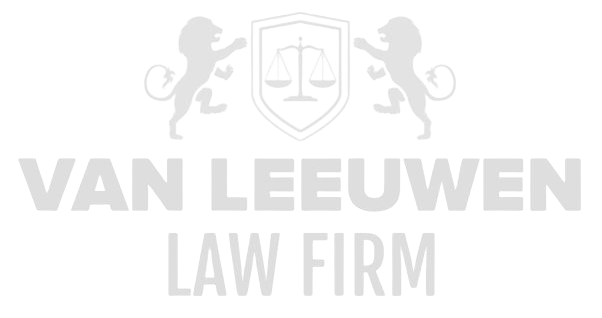The financing of terrorism constitutes an exceptionally complex and strategically sensitive dimension of global financial crime, distinguished by its direct and far-reaching implications for national security, geopolitical stability and the integrity of the international financial system. Whereas traditional money laundering is primarily aimed at obscuring the illicit origin of funds, the financing of terrorism serves a fundamentally different objective: enabling activities that can undermine core societal structures. These activities range from recruitment and training to the execution of violent attacks and destabilising operations. The inherent challenge lies in the fact that terrorist financing flows frequently pass through seemingly legitimate financial channels, often consisting of small-scale transactions or conducted via entities and institutions that exhibit a prima facie lawful character. As a result, conventional detection mechanisms regularly prove insufficient, requiring boards and senior management to cultivate a significantly heightened and more sophisticated risk awareness—one that extends well beyond technical compliance alone.
Against the backdrop of stringent sanctions regimes, international reporting obligations and cross-sector supervisory frameworks, organisations are expected to maintain a robust, future-proof and proportionate compliance framework capable not only of monitoring transactions but also of interpreting broader intent, contextual indicators and the underlying risk exposure. National and supranational bodies—including the European Union, the Financial Action Task Force (FATF) and the United Nations—are continuously tightening requirements relating to due diligence, screening and mandatory reporting. For the C-suite, this necessitates the continuous refinement of governance structures, intensified and constructive engagement with regulators and market participants, and unavoidable investment in technological innovation, data-analytic capacity and specialised expertise. Only through the implementation of a multidimensional and integrated approach to these risks can senior leadership effectively contribute to the early identification of organisational vulnerabilities and thereby help ensure that financial resources—whether directly or indirectly—are prevented from facilitating the destructive violence that enables terrorist groups to sustain their operations.
Source of Funds
The origin of funds used for terrorism financing is extremely diverse and complex. Terrorist groups utilize both legal and illegal income sources to fund their activities. Legal sources may include donations from sympathizers, gifts from philanthropic organizations, income from commercial enterprises, and even taxation in territories under their control. At the same time, criminal activities such as drug trafficking, human trafficking, smuggling, extortion, and corruption are widely exploited to generate financial resources. This mixture of legal and illegal financing streams complicates the detection process, as the distinction between authorized and prohibited money flows often becomes blurred.
Determining the exact origin of funds is crucial for effectively countering terrorism financing. This requires a deep forensic financial analysis in which money flows across different countries and institutions are tracked and analyzed. Attention is also paid to patterns deviating from regular financial transactions, such as unusual deposits, frequent small amounts, or transactions via countries with weak regulation. Unraveling these sources is essential not only to stop direct money flows but also to expose and dismantle the broader network supporting this financing.
Terrorist organizations are aware of the need to conceal their financial activities and continually adapt their methods to evade detection. For example, they use “smurfing,” where large sums are split into small, less conspicuous transactions, often using informal and unregulated financial systems. Legitimate channels such as donations through non-profit organizations or the establishment of shell companies are also frequently abused. This calls for continuous innovation in detection and control methods by governments and financial institutions to effectively combat these disguised financing flows.
Channels for Money Transfers
The channels through which terrorists transfer money are highly varied and innovative, partly due to technological developments and globalization. Traditional banks remain an important instrument, but there is a significant shift toward alternative and less transparent methods. Informal money transfer systems such as hawala or hundi are frequently used because of their fast and anonymous nature, with little or no formal transaction documentation. These systems are based on trust and networks within specific communities, making it very challenging for law enforcement agencies to trace money flows.
Furthermore, digital currencies, including cryptocurrencies, are becoming an increasingly important channel for terrorism financing. The pseudonymous nature of these currencies allows relatively unnoticed cross-border money transfers, bypassing traditional banks and control systems. Although some blockchain technologies offer transparency through public ledgers, there are various privacy-focused coins and techniques such as mixing and tumbling that complicate tracing the source and destination. These new channels require specialized knowledge and technical tools to detect and investigate suspicious transactions.
In addition to these channels, physical means of transport should not be overlooked. Cash remains an extremely flexible and difficult-to-control medium, especially for cross-border transport. Terrorists use couriers and hidden compartments in vehicles, and sometimes even postal and courier services. The combination of traditional and modern channels makes the financial landscape of terrorism financing particularly stubborn and complex. It requires a multidimensional approach where regulation, technology, and international cooperation reinforce each other to effectively choke off money flows.
Use of Non-profit Organizations and Charities
Non-profit organizations and charities play a crucial role in civil society but are also frequently misused as a cover for channeling financial resources to terrorist groups. Due to their often favorable tax status and the societal legitimacy they enjoy, such institutions can act as intermediaries for legitimizing funds of dubious origin. These organizations may be used in various ways, for example by transferring seemingly legitimate donations or financing activities that appear humanitarian but in reality support terrorism.
Monitoring this sector is complex, partly because of the large number of small and local organizations active in vulnerable regions. Often, strict financial control mechanisms and transparency requirements are lacking, allowing abuse to go unnoticed. At the same time, it is crucial to safeguard the social benefit of legitimate aid and not to suspect all non-profit organizations indiscriminately. Careful risk analysis, combined with intensive monitoring and cooperation with relevant authorities, is necessary to effectively manage this duality.
Moreover, terrorist networks use strategic placement within non-profit organizations, where employees or board members have direct ties to terrorist groups. Through their positions, they can influence the allocation of funds and ensure that financing through these channels is purposefully deployed. Exposing such infiltrations requires extensive intelligence efforts and in-depth knowledge of the local context and organizational structures. Without this knowledge, the risk remains that non-profit organizations inadvertently contribute to terrorism financing.
Geographical Risk Areas
Geographical risk areas play a prominent role in the dynamics of terrorism financing. Countries and regions characterized by political instability, weak governance, poor law enforcement, and corruption often form fertile ground for the emergence and persistence of financial networks supporting terrorism. These areas often function as transit or origin points for financial resources but also as safe havens where terrorist groups can operate unhindered and raise funds. The lack of effective financial regulation and supervision in these countries makes it difficult to identify and obstruct suspicious transactions.
Furthermore, sanctions and international restrictions further pressure the financial infrastructure of these countries, leading to alternative, often less transparent, channels for money movement. Some states or regions even actively facilitate this process through political or ideological support for certain groups. This creates a complex geopolitical context in which conflicting interests complicate the fight against terrorism financing. Law enforcement agencies must incorporate these geographical contexts into risk assessments and operational planning.
Mapping geographical risk areas requires continuous analysis of political developments, security dynamics, and economic conditions. This often involves cooperation with international organizations and intelligence agencies to gather current and relevant information. The focus is on recognizing financial routes and infrastructures operating from these risk areas so that targeted interventions can be deployed to effectively limit the flow of funds to terrorist activities.
Financial Institutions and Compliance
Financial institutions form the first and often most crucial line of defense in the fight against terrorism financing. Banks, payment service providers, insurers, and other financial entities face the immense challenge of identifying suspicious transactions amid millions of daily money flows. The complexity of this task is increased by terrorists’ constant adaptation to new rules and control mechanisms. Compliance departments within these institutions must therefore not only meet legal requirements but also proactively anticipate new trends and techniques in terrorism financing. This requires an integrated approach where advanced data analysis, risk management, and cooperation with investigative authorities go hand in hand.
The implementation of a robust compliance program includes, among other things, the introduction of transaction monitoring systems that recognize unusual patterns, training staff to be alert to suspicious signs, and drafting detailed internal protocols for reporting and escalation. A particular focus is the balance between safeguarding customer privacy and sharing information with authorities. Financial institutions need to cultivate a culture of compliance in which integrity and transparency are central, in order to avoid reputational damage and legal risks resulting from involvement in terrorism financing.
Furthermore, the role of external audits and regulatory supervisors is indispensable in ensuring the effectiveness of compliance measures. Authorities such as central banks and financial watchdogs conduct periodic checks to assess whether institutions comply with international standards such as those of the Financial Action Task Force (FATF). These controls encourage financial institutions to continuously invest in technological innovations and process improvements. At the same time, this fosters a level playing field where negligent institutions are addressed and penalized. The ongoing evolution of laws and regulations demands a dynamic and forward-looking compliance approach capable of timely detecting and combating terrorism financing.
KYC (Know Your Customer) and Due Diligence
The principle of Know Your Customer (KYC) forms a fundamental pillar in combating terrorism financing. The process of identifying, verifying, and continuously monitoring customers aims to increase transparency in financial transactions and minimize the risk of abuse. Effective KYC guidelines require financial institutions to collect detailed information about their customers’ identities, economic backgrounds, and the nature of their business activities. In addition, the origin of funds must be investigated to prevent the acceptance and use of illegal resources within the financial system.
KYC is not merely a one-time procedure but a continuous process that must dynamically respond to changes in the customer’s risk profile. It requires regular updates and reassessments, especially when transactions or customer behavior deviate from established patterns. These due diligence activities are often extensive and complex, particularly for higher-risk clients such as politically exposed persons (PEPs), foreign entities, and customers from high-risk regions. The quality of KYC procedures directly impacts an institution’s ability to detect suspicious activities early and respond adequately.
An important aspect of KYC and due diligence is the integration of advanced technologies such as artificial intelligence and machine learning, which help analyze large datasets and detect anomalies. These technological tools increase the efficiency and accuracy of customer monitoring but can never fully replace human judgment. The combination of strict regulation, technological innovation, and expert analysis forms the cornerstone of a successful KYC policy, essential for countering terrorism financing in an increasingly complex financial landscape.
Sanctions and Embargoes
Sanctions and embargoes are powerful instruments in international law to combat terrorism financing. These measures target individuals, entities, states, and regions involved in or supporting terrorist activities. Sanctions lists are compiled by national governments, international organizations such as the United Nations, and regional cooperation bodies, and include names of persons and organizations who may have their assets frozen or be subject to trade bans. These measures make it more difficult for involved parties to access the financial system and thereby finance their operations.
Enforcing sanctions requires a coordinated approach involving financial institutions, customs, law enforcement, and international partners. Banks are obligated to immediately block and report transactions involving sanctioned parties. However, the effectiveness of sanctions is regularly threatened by legal and technical obstacles, such as the use of shell companies, rerouting through third parties, and countries that deliberately ignore or circumvent sanctions. This demands continuous adaptation of sanction regimes and intensification of supervision mechanisms.
Moreover, sanctions law plays a dynamic role within the broader framework of counter-terrorism and international security. Sanctions are regularly reviewed, expanded, or eased depending on political developments and negotiations. This requires a high level of alertness among financial institutions and supervisors who must quickly anticipate changes. The legal complexity of sanctions also requires expert interpretation to prevent unnecessary hindrance of legitimate trade and investments while maintaining pressure on terrorist networks.
Terrorist Networks and Structures
The structures within which terrorism financing takes place are typically complex and carefully designed to hinder detection and dismantling. Terrorist networks use layered and dispersed organizational structures, including front companies, intermediaries, and affiliated enterprises that function as seemingly legitimate vehicles for money flows. These structures are often transnational, with different legal entities in various jurisdictions cooperating to mask financial activities and spread risks. Revealing these networks requires in-depth investigation and a combination of financial analysis, intelligence gathering, and legal expertise.
Front companies are strategically employed to simulate legitimate commercial activities, mixing money flows with regular business transactions. This makes it difficult for law enforcement to determine the origin and destination of funds. Additionally, complex ownership structures and trusts are often used to conceal the ultimate beneficiaries. These methods require advanced due diligence and the ability to link relationships and transactions across borders.
The continuous adaptation of terrorist organizations to new legal and technological circumstances keeps their networks and structures dynamic. They are able to quickly find alternative routes and utilize new financial instruments. This demands a flexible and innovative approach from investigative agencies, where international cooperation and information sharing are essential. Only through this multidimensional and cross-border approach can the deeply rooted structures of terrorism financing be effectively broken down.
Cryptocurrency and Anonymity
The rise of cryptocurrencies has added a new dimension to the financing of terrorism. Digital currencies such as Bitcoin, Ethereum, and numerous altcoins provide terrorists with a relatively anonymous and decentralized way to transfer funds, independent of traditional financial systems and oversight mechanisms. These technologies use blockchain, a transparent yet pseudonymous ledger system in which transactions are recorded without a direct link to users’ identities. This creates challenges for law enforcement and financial institutions trying to trace and block illegal money flows.
The inherent characteristics of cryptocurrencies — including the absence of a central administrator, cross-border accessibility, and the possibility to use privacy coins — make them an attractive tool for terrorism financing. Terrorist groups can thus collect, store, and transfer funds without direct involvement of banks or other financial institutions, making traditional AML (Anti-Money Laundering) and CTF (Counter-Terrorism Financing) measures less effective. At the same time, rapid technological developments make it difficult to keep regulations and supervision current and effective.
Nevertheless, opportunities are emerging to monitor cryptocurrency transactions using advanced analytical techniques such as blockchain analysis and data mining. Law enforcement agencies and compliance experts are developing tools to detect patterns and suspicious activities within the vast amounts of transaction data. Combining technological innovation with international cooperation is crucial to addressing the challenges of anonymity and decentralization. Only through a comprehensive approach can the threat of terrorism financing via cryptocurrencies be effectively limited.
International Cooperation and Information Sharing
The global nature of terrorism financing requires a coordinated international approach where information exchange and cooperation between countries and agencies are central. Terrorist networks often operate across borders and exploit differences in legislation, supervision, and enforcement to conceal and facilitate their activities. Efficient sharing of financial intelligence, best practices, and operational data is essential to narrow the playing field in which terrorism financing can occur.
International organizations such as the Financial Action Task Force (FATF), the United Nations, Interpol, and regional cooperation frameworks play an indispensable role in harmonizing regulations, setting minimum standards, and facilitating the exchange of information. In addition, bilateral and multilateral treaties are necessary to strengthen the legal framework and support law enforcement across borders. Financial Intelligence Units (FIUs) are pivotal in collecting, analyzing, and sharing suspicious transaction reports among member states.
However, the effectiveness of international cooperation is often hampered by political interests, disparities in capabilities, and the technological gap between countries. Building trust, ensuring privacy, and creating transparency are therefore fundamental. Only by strengthening these cooperative relationships and investing in joint capacities can a strong front be formed against the complex and dynamic threat of terrorism financing.











